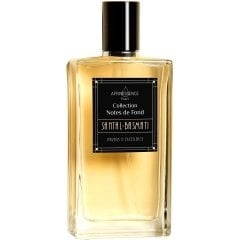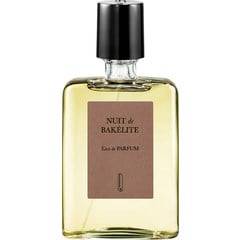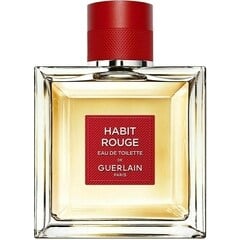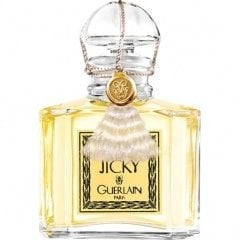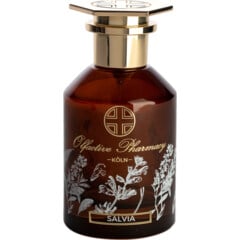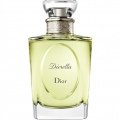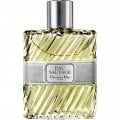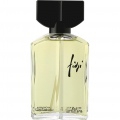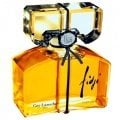
Gold
Reviews
Filter & sort
Translated
Show original
Tanti amati - profumi con basmati or much loved rice scents?
What could be better than coming home to the comforting, homey scent of basmati rice just down the hall?
For some, possibly the smell of sauerkraut.
Is after all - like everything - a matter of taste and a question of socialization.
Who has like me migration background (in my case 50% Persian), which will probably have the smell of rice and saffron already at conception inscribed in memory.
Therefore, it is certainly not surprising if I freely oute myself here as a former "sucker for rice fragrances".
(Better an old "sucker" than a f*cker - you know what I mean. Rice speaks of home and comfort.)
Now rice hardly gives off an odor when not cooked.
Only through a so-called. "Maillard reaction" come the characteristic scent impressions to the appearance. This means simplified that by the heat the amino acids and sugars in the rice are brought to enter other, new connections. But this rule only applies to cooking.
In perfume making, it is different.
"There is no natural rice absolute or oil, so we have to be inventive and try to mimic things," said on this subject, for example, Ralf Schwieger, who composed a very special rice fragrance for ELDO.
My research on the net revealed that perfumers mostly use the artificial molecules 2-acetyl-pyrazines in combination with coumarin or musk to achieve a rice-like effect.
In the past, there have been some creations that have had a rice note.
"Kenzo Amour" (2006) is probably the most famous in the vein, "Fils de Dieu du Riz et des Agrumes" by ELDO by Ralf Schwieger offers rice in a tropical setting, "Dojima" by Mona di Orio presents a milky variation, "Poudre de Riz" by Pierre Guillaume goes in the (as the name suggests) powdery direction. Demeter's "Rice Paddy" is inspired by the Far East and is a fine variant that is also not overly expensive.
But now to "Santal Basmati" itself.
"Santal Basmati" is by far the most expensive fragrance that boasts of containing a rice note - and unfortunately also the worst. (345 euros/100 ml).
What is here as a "basmati note" briefly and fleetingly in the air and on the skin, has for me nothing at all to do with the aroma, which should be familiar to all who have already prepared a high-quality basmati rice itself. The slightly sweet, pudding-like touch of the artificial accord in "Santal Basmati" is anyway plastered over by sandalwood after a few minutes. This may be because of me (as the company states) from Kerala in India, but "ma waas es net" - as the Hesse sacht...
...I do not know anyway, but I'm already a little suspicious when at the end of a very exhausting, 12-hour "wearing time" Cashmeran comes to light.
Conclusion: "Santal Basmati" has disappointed me as a rice lover all along the line.
But just as preparing rice the Indian or Persian way requires a particularly large amount of practice, so too does the composition of a basmati chord not seem to be given to everyone/everyone. Other than lush, super-potent sandalwood, I can barely detect anything in Alexandra Carlin's creation.
But basically, this is not a big deal.
Perfumes are perhaps always particularly good when they create new fragrance worlds and go down abstract paths. Similar to fragrances that merely recreate "lilac" or even "lemon cake", a basmati rice scent from the bottle ultimately does not seem desirable for me, as long as the little fire on our home stove is still burning and we can cook ourselves our beloved rice if necessary (who wants, I'll be happy to send recipes!).
The hunt for the perfect rice fragrance is over.
Call me an "ex-sucker."
(With loving thanks to Schalkerin for the testing opportunity).
For some, possibly the smell of sauerkraut.
Is after all - like everything - a matter of taste and a question of socialization.
Who has like me migration background (in my case 50% Persian), which will probably have the smell of rice and saffron already at conception inscribed in memory.
Therefore, it is certainly not surprising if I freely oute myself here as a former "sucker for rice fragrances".
(Better an old "sucker" than a f*cker - you know what I mean. Rice speaks of home and comfort.)
Now rice hardly gives off an odor when not cooked.
Only through a so-called. "Maillard reaction" come the characteristic scent impressions to the appearance. This means simplified that by the heat the amino acids and sugars in the rice are brought to enter other, new connections. But this rule only applies to cooking.
In perfume making, it is different.
"There is no natural rice absolute or oil, so we have to be inventive and try to mimic things," said on this subject, for example, Ralf Schwieger, who composed a very special rice fragrance for ELDO.
My research on the net revealed that perfumers mostly use the artificial molecules 2-acetyl-pyrazines in combination with coumarin or musk to achieve a rice-like effect.
In the past, there have been some creations that have had a rice note.
"Kenzo Amour" (2006) is probably the most famous in the vein, "Fils de Dieu du Riz et des Agrumes" by ELDO by Ralf Schwieger offers rice in a tropical setting, "Dojima" by Mona di Orio presents a milky variation, "Poudre de Riz" by Pierre Guillaume goes in the (as the name suggests) powdery direction. Demeter's "Rice Paddy" is inspired by the Far East and is a fine variant that is also not overly expensive.
But now to "Santal Basmati" itself.
"Santal Basmati" is by far the most expensive fragrance that boasts of containing a rice note - and unfortunately also the worst. (345 euros/100 ml).
What is here as a "basmati note" briefly and fleetingly in the air and on the skin, has for me nothing at all to do with the aroma, which should be familiar to all who have already prepared a high-quality basmati rice itself. The slightly sweet, pudding-like touch of the artificial accord in "Santal Basmati" is anyway plastered over by sandalwood after a few minutes. This may be because of me (as the company states) from Kerala in India, but "ma waas es net" - as the Hesse sacht...
...I do not know anyway, but I'm already a little suspicious when at the end of a very exhausting, 12-hour "wearing time" Cashmeran comes to light.
Conclusion: "Santal Basmati" has disappointed me as a rice lover all along the line.
But just as preparing rice the Indian or Persian way requires a particularly large amount of practice, so too does the composition of a basmati chord not seem to be given to everyone/everyone. Other than lush, super-potent sandalwood, I can barely detect anything in Alexandra Carlin's creation.
But basically, this is not a big deal.
Perfumes are perhaps always particularly good when they create new fragrance worlds and go down abstract paths. Similar to fragrances that merely recreate "lilac" or even "lemon cake", a basmati rice scent from the bottle ultimately does not seem desirable for me, as long as the little fire on our home stove is still burning and we can cook ourselves our beloved rice if necessary (who wants, I'll be happy to send recipes!).
The hunt for the perfect rice fragrance is over.
Call me an "ex-sucker."
(With loving thanks to Schalkerin for the testing opportunity).
24 Comments
Translated
Show original
Lucky coincidences
Have you ever had a "moment of serendipity" while exploring a new scent?
"Serendipity" - this term, which could be translated as "happy coincidence", came to mind when I first took a closer look at "Nuit de Bakélite" and its creator Isabelle Doyen.
For Christmas, I received a wonderful book from my French friend called "Les Parfumeurs" - dans l'intimité de grands créateurs de parfum" (Harper Collins, 2018).
Here, ten great noses (including Thierry Wasser, Mathilde Laurent, Annick Menardo u. Jean-Claude Ellena, to name but a few) themselves talk about their careers and their profession, but also about very private things.
Isabelle Doyen is also in the mix (p.51-77).
I devoured the text written by her and was particularly pleased with her explanations of various ingredients of "Nuit de B.", as I always find it fascinating when perfumers explain their work.
In addition, there is a lot that I did not know about Madame Doyen, which makes me feel very close to her for personal reasons.
A substance has it Isabelle Doyen namely since her childhood (as well as me) very taken. And that is galbanum. The first perfume she wore as a teenager was "Vent Vert" by Balmain, created by the brilliant Madame Cellier. It contains a very strong galbanum note.
"I found it fascinating," writes Isabelle Doyen. (All the following French passages are translated by me, as the book has not yet been published in German).
"This fascination with galbanum never left me. By the way, it turned out that in Iran produces an excellent galbanum. Later in life, when I met my husband in Pakistan and I learned that he was Iranian, I told him, 'You come from the land of galbanum!' He didn't know what that was, so he just answered 'yes'. ."
It was clear that my future husband possessed a very special aura thanks to this earthy element...".
She goes on to write that her very special life scents include "Chanel No. 19", "Mitsouko", "Miss Dior" and "Femme de Rochas". Of course, these contain galbanum.
Another association with Iran represents her particular love of saffron. "Saffron is my oldest scent memory and because everything overlaps, saffron is also a scent associated with Iran, just like galbanum."
In "Nuit de B.", saffron and galbanum are found in the top notes immediately upon spraying on! Fantastic.
But the fragrance is made particularly exciting by the extraordinary "treatment" that Doyen gives the tuberose. On page 63 of the book "Les Parfumeurs" she speaks of four dreams that she wanted to realize or still wants.
"One of my dreams is to lie down in a field of tuberoses.... and because I have certain little obsessions, I would like it to be fantastic Iranian tuberoses. Tuberose is one of those flowers that hasn't been "destroyed" yet. They have not yet been used in cleaning products beyond all measure, unlike the lilac or the lily of the valley. There are flowers that have really already become caricatures that can repel us, although a small sprig of true lily of the valley can be extraordinarily beautiful for those who love this fragrance. To restore the delicacy of these 'destroyed' fragrances is, in my view, one of the most difficult exercises there is."
There is a very particular tuberose in "Nuit de B.," one that even I, who am not usually a big fan of the note, like. It's a green, airy impression. A tuberose that smells a bit like rootwork and medicine, but also evokes carrot and iris. The galbanum is very much present, especially at the start, but it continues to pull through the scent as it progresses, giving it a certain vintage green charm.
Some tree bark and birch tar can also be detected, but mainly the tuberose in its completely new green spicy guise.
By the way, I am not able to go into the "Bakelite" association, since the substance means nothing to me and I have no memory of the smell of an old tube radio or a telephone made of Bakelite.
"Nuit de B." is unlike any perfume I've smelled before.... (and I have tried many, many). Anyone who chooses this fragrance is wearing something new, something no one has ever created before in this form.
No wonder the fragrance has won various awards: "Prix de l'émotion de l'Olfactorama", "Expert Award of the Fragrance Foundation Awards", "Independent Prize at the 'Art and Olfaction Awards' " in 2018.
I find it particularly exciting that "Nuit de B." ultimately refers to two masterpieces by the great Germaine Cellier, namely "Vent Vert" (1945) and "Fracas" (1948).
In my view, the clever Isabelle Doyen therefore follows in the footsteps of Germaine Cellier with this outstanding work.
Isabelle writes thus:
"But sometimes, too rarely for my taste, one becomes aware that at a very specific moment in a formula, something like MAGIC takes place." (S. 68).
In "Nuit de B." that is really exactly what happens.
P.S. "Serendipity: the occurrence and development of events by chance in a happy or benificial way":
so glad I found this scent!
(and my husband, coincidentally also Iranian...).
P.P.S. And who sent it to me? The scent, I mean... a very special bunny. Thank you, my dear.
"Serendipity" - this term, which could be translated as "happy coincidence", came to mind when I first took a closer look at "Nuit de Bakélite" and its creator Isabelle Doyen.
For Christmas, I received a wonderful book from my French friend called "Les Parfumeurs" - dans l'intimité de grands créateurs de parfum" (Harper Collins, 2018).
Here, ten great noses (including Thierry Wasser, Mathilde Laurent, Annick Menardo u. Jean-Claude Ellena, to name but a few) themselves talk about their careers and their profession, but also about very private things.
Isabelle Doyen is also in the mix (p.51-77).
I devoured the text written by her and was particularly pleased with her explanations of various ingredients of "Nuit de B.", as I always find it fascinating when perfumers explain their work.
In addition, there is a lot that I did not know about Madame Doyen, which makes me feel very close to her for personal reasons.
A substance has it Isabelle Doyen namely since her childhood (as well as me) very taken. And that is galbanum. The first perfume she wore as a teenager was "Vent Vert" by Balmain, created by the brilliant Madame Cellier. It contains a very strong galbanum note.
"I found it fascinating," writes Isabelle Doyen. (All the following French passages are translated by me, as the book has not yet been published in German).
"This fascination with galbanum never left me. By the way, it turned out that in Iran produces an excellent galbanum. Later in life, when I met my husband in Pakistan and I learned that he was Iranian, I told him, 'You come from the land of galbanum!' He didn't know what that was, so he just answered 'yes'. ."
It was clear that my future husband possessed a very special aura thanks to this earthy element...".
She goes on to write that her very special life scents include "Chanel No. 19", "Mitsouko", "Miss Dior" and "Femme de Rochas". Of course, these contain galbanum.
Another association with Iran represents her particular love of saffron. "Saffron is my oldest scent memory and because everything overlaps, saffron is also a scent associated with Iran, just like galbanum."
In "Nuit de B.", saffron and galbanum are found in the top notes immediately upon spraying on! Fantastic.
But the fragrance is made particularly exciting by the extraordinary "treatment" that Doyen gives the tuberose. On page 63 of the book "Les Parfumeurs" she speaks of four dreams that she wanted to realize or still wants.
"One of my dreams is to lie down in a field of tuberoses.... and because I have certain little obsessions, I would like it to be fantastic Iranian tuberoses. Tuberose is one of those flowers that hasn't been "destroyed" yet. They have not yet been used in cleaning products beyond all measure, unlike the lilac or the lily of the valley. There are flowers that have really already become caricatures that can repel us, although a small sprig of true lily of the valley can be extraordinarily beautiful for those who love this fragrance. To restore the delicacy of these 'destroyed' fragrances is, in my view, one of the most difficult exercises there is."
There is a very particular tuberose in "Nuit de B.," one that even I, who am not usually a big fan of the note, like. It's a green, airy impression. A tuberose that smells a bit like rootwork and medicine, but also evokes carrot and iris. The galbanum is very much present, especially at the start, but it continues to pull through the scent as it progresses, giving it a certain vintage green charm.
Some tree bark and birch tar can also be detected, but mainly the tuberose in its completely new green spicy guise.
By the way, I am not able to go into the "Bakelite" association, since the substance means nothing to me and I have no memory of the smell of an old tube radio or a telephone made of Bakelite.
"Nuit de B." is unlike any perfume I've smelled before.... (and I have tried many, many). Anyone who chooses this fragrance is wearing something new, something no one has ever created before in this form.
No wonder the fragrance has won various awards: "Prix de l'émotion de l'Olfactorama", "Expert Award of the Fragrance Foundation Awards", "Independent Prize at the 'Art and Olfaction Awards' " in 2018.
I find it particularly exciting that "Nuit de B." ultimately refers to two masterpieces by the great Germaine Cellier, namely "Vent Vert" (1945) and "Fracas" (1948).
In my view, the clever Isabelle Doyen therefore follows in the footsteps of Germaine Cellier with this outstanding work.
Isabelle writes thus:
"But sometimes, too rarely for my taste, one becomes aware that at a very specific moment in a formula, something like MAGIC takes place." (S. 68).
In "Nuit de B." that is really exactly what happens.
P.S. "Serendipity: the occurrence and development of events by chance in a happy or benificial way":
so glad I found this scent!
(and my husband, coincidentally also Iranian...).
P.P.S. And who sent it to me? The scent, I mean... a very special bunny. Thank you, my dear.
39 Comments
Translated
Show original
Habit Rouge, you're not my habibi!
Over 80 comments and 803 ratings registers this classic alone on Parfumo.
Why I now also want to add my two cents is simple: "Habit Rouge EdT" came a few days ago as a gift to me (X-MAS was all around us...) and I wear the eau de toilette now after a long time again, without really feeling this giant JOY to the fragrance, which runs through most comment odes here.
Perhaps you have desire to fathom with me, why for me this Guerlain is not a "10 "er candidate, but you must be indulgent with my old Spießerseele.
Already as a teenager I became aware of "Habit Rouge" because my father, whose name differed only by a single letter from the word "Habit", wore this fragrance for one bottle, but (thank God!) did not make it the perfume of his life. Later, my sister and I would buy a bottle of the eau de toilette every now and then, because we just liked the name "Habit" plus "Rouge" (for the political direction) so much (family specific craziness!) and we thought that "Habit Rouge" was the big brother of "Shalimar" (and "Shalimar" used to be more expensive. Back in our student days, when you couldn't order anything on the internet and we had to save money).
The scent of HR and SH is very similar. Just as with "Shalimar", the scent opens with a delightful cascade of hesperidic notes, invigorating and almost cutting.
This is the most beautiful part of the fragrance for me, the reason I love to spray it! No one does such great citrusy top notes like Guerlain!
This is followed by some notes in "Habit Rouge" that are not mentioned here in the pyramid, but which are given in some French books and which you can perceive very well, namely roses, geranium and iris. At this point in the heart, the fragrance takes on something dusty before settling into a soft balsamic base, showing very subtle leather notes, then settling gently (again, much like Shalimar) on vanilla and slowly fading out. Charming, but ...- but what?
It's too soft for me, it's too much like "Shalimar", it's perfectly androgynous and so strangely dusty at the same time. On the one hand, "Habit Rouge" is not a fragrance for the nice, solid family man next door, who trots dutifully to the office every day (or now sits trapped in front of his screen in the home office) and would never start an affair with the colleague, but on the other hand, it is also, in my view, completely unsuitable for men who want to stand out, who want to radiate strength, who are unconventional.
When I smell "Habit Rouge", one of those classic dandies from the last century appears in my mind's eye. A man wearing colorful silk scarves with paisley patterns and a hint of powder on his pale complexion.
The version I sprayed on today is reformulated, of course, but it retains its nostalgic charm. In theory, I think it's nonsense to overload fragrances with gender stereotypes, indeed, it's extremely old-fashioned and "politically incorrect" to write that this or that flower smells "masculine" and the other note "feminine".
Nevertheless, for reasons of socialization, most people make gender-specific assignments all the time, both in fragrances and in colors, in fashion in general, etc., etc., etc.
So I apologize if this comment ultimately reads like a column from the 50's, but I can't help myself: "Habit Rouge" is not a masculine scent to me. A man should not smell like someone who is afraid to reach for "Shalimar". He should either use "Shalimar" right away or "Polo" by Ralph Lauren. Or, for example, "Monsieur" by F. Malle. He is not called "Monsieur" for nothing!
So, and now you can finish me off..
Why I now also want to add my two cents is simple: "Habit Rouge EdT" came a few days ago as a gift to me (X-MAS was all around us...) and I wear the eau de toilette now after a long time again, without really feeling this giant JOY to the fragrance, which runs through most comment odes here.
Perhaps you have desire to fathom with me, why for me this Guerlain is not a "10 "er candidate, but you must be indulgent with my old Spießerseele.
Already as a teenager I became aware of "Habit Rouge" because my father, whose name differed only by a single letter from the word "Habit", wore this fragrance for one bottle, but (thank God!) did not make it the perfume of his life. Later, my sister and I would buy a bottle of the eau de toilette every now and then, because we just liked the name "Habit" plus "Rouge" (for the political direction) so much (family specific craziness!) and we thought that "Habit Rouge" was the big brother of "Shalimar" (and "Shalimar" used to be more expensive. Back in our student days, when you couldn't order anything on the internet and we had to save money).
The scent of HR and SH is very similar. Just as with "Shalimar", the scent opens with a delightful cascade of hesperidic notes, invigorating and almost cutting.
This is the most beautiful part of the fragrance for me, the reason I love to spray it! No one does such great citrusy top notes like Guerlain!
This is followed by some notes in "Habit Rouge" that are not mentioned here in the pyramid, but which are given in some French books and which you can perceive very well, namely roses, geranium and iris. At this point in the heart, the fragrance takes on something dusty before settling into a soft balsamic base, showing very subtle leather notes, then settling gently (again, much like Shalimar) on vanilla and slowly fading out. Charming, but ...- but what?
It's too soft for me, it's too much like "Shalimar", it's perfectly androgynous and so strangely dusty at the same time. On the one hand, "Habit Rouge" is not a fragrance for the nice, solid family man next door, who trots dutifully to the office every day (or now sits trapped in front of his screen in the home office) and would never start an affair with the colleague, but on the other hand, it is also, in my view, completely unsuitable for men who want to stand out, who want to radiate strength, who are unconventional.
When I smell "Habit Rouge", one of those classic dandies from the last century appears in my mind's eye. A man wearing colorful silk scarves with paisley patterns and a hint of powder on his pale complexion.
The version I sprayed on today is reformulated, of course, but it retains its nostalgic charm. In theory, I think it's nonsense to overload fragrances with gender stereotypes, indeed, it's extremely old-fashioned and "politically incorrect" to write that this or that flower smells "masculine" and the other note "feminine".
Nevertheless, for reasons of socialization, most people make gender-specific assignments all the time, both in fragrances and in colors, in fashion in general, etc., etc., etc.
So I apologize if this comment ultimately reads like a column from the 50's, but I can't help myself: "Habit Rouge" is not a masculine scent to me. A man should not smell like someone who is afraid to reach for "Shalimar". He should either use "Shalimar" right away or "Polo" by Ralph Lauren. Or, for example, "Monsieur" by F. Malle. He is not called "Monsieur" for nothing!
So, and now you can finish me off..
41 Comments
Translated
Show original
Since 1889 in the program: fragrances you should know, for example "Jicky" !
"Jicky" has been on the market since 1889 and prepared the ground for modern perfumery.
From the structure a real Fougére:
Bergamot and lavender frame a heart of geranium, followed by a balsamic base of vanilla, tonka, coumarin and civet. The bergamot determines the fragrance at the beginning, it encloses the green herbs and lavender, which are also present. Zibet then plays a key role: it combines the woody parts of the fragrance with the floral heart of rose and geranium. Spices are also very subtly incorporated, a little cinnamon, which gives warmth and leads to the balsamic base, where vanilla and coumarin, both synthetic, meet.
The creator of the fragrance, Aimé Guerlain, balanced each note very carefully.
Therefore, the mix of lavender, vanilla and civet does not seem old-fashioned, on the contrary, it still seems wearable today.
"Jicky" is also a unisex perfume of the first hour, much more stylish than many perfumes designed with the aroma-chemistry sledgehammer of the last 20 years, completely independent of whether they come from the "niche" or mainstream.
The Eau de Toilette in particular allows a look back into the history of French perfumery, as it has particularly finely worked top notes.
The "New York Times" hired a perfume critic in 2006. A laudable effort, because it's harder than you might think to find your way through the perfume forest. Anyone who was not allowed to grow up in a perfume-affine environment and only starts to smell the world of fragrances as an adult needs some orientation beyond the first phase of the primary fragrance experience. In recent years, a number of very useful books have been published on the subject, many initially in English, written by American or English fragrance experts*.
But luckily the French are catching up.
I find the book "Les cent onze parfums qu'il faut sentir avant de mourir" ("The 111 perfumes you should have smelled before you die") by the authors' collective "Nez culture" very inspiring and much more vividly and knowledgeably written than many a text written by Luca Turin.
That "111-Perfume-Book" begins - how could it be different - with an article about "Jicky".
Unfortunately the book has not yet been translated into German.
As fun facts, the authors* always mention for each of the fragrances described in which films they played a role and who is said to have worn them.
With "Jicky" the row of celebrities is very long: Fanny Ardent, Brigitte Bardot, Jane Birkin, Joan Collins, Jackie Kennedy, Roger Moore etc.
The average time needed to buy a perfume is 30 minutes. I learned this from reading the book "Perfume: A guide to the world of fragrances", written by none other than Jean-Claude Ellena. 30 minutes of tasting several fragrances. 30 minutes in which the base notes have not yet unfolded. Mispurchases and disappointments are pre-programmed.
The clever perfume fan makes a pre-selection.
"Jicky" wouldn't be bad
From the structure a real Fougére:
Bergamot and lavender frame a heart of geranium, followed by a balsamic base of vanilla, tonka, coumarin and civet. The bergamot determines the fragrance at the beginning, it encloses the green herbs and lavender, which are also present. Zibet then plays a key role: it combines the woody parts of the fragrance with the floral heart of rose and geranium. Spices are also very subtly incorporated, a little cinnamon, which gives warmth and leads to the balsamic base, where vanilla and coumarin, both synthetic, meet.
The creator of the fragrance, Aimé Guerlain, balanced each note very carefully.
Therefore, the mix of lavender, vanilla and civet does not seem old-fashioned, on the contrary, it still seems wearable today.
"Jicky" is also a unisex perfume of the first hour, much more stylish than many perfumes designed with the aroma-chemistry sledgehammer of the last 20 years, completely independent of whether they come from the "niche" or mainstream.
The Eau de Toilette in particular allows a look back into the history of French perfumery, as it has particularly finely worked top notes.
The "New York Times" hired a perfume critic in 2006. A laudable effort, because it's harder than you might think to find your way through the perfume forest. Anyone who was not allowed to grow up in a perfume-affine environment and only starts to smell the world of fragrances as an adult needs some orientation beyond the first phase of the primary fragrance experience. In recent years, a number of very useful books have been published on the subject, many initially in English, written by American or English fragrance experts*.
But luckily the French are catching up.
I find the book "Les cent onze parfums qu'il faut sentir avant de mourir" ("The 111 perfumes you should have smelled before you die") by the authors' collective "Nez culture" very inspiring and much more vividly and knowledgeably written than many a text written by Luca Turin.
That "111-Perfume-Book" begins - how could it be different - with an article about "Jicky".
Unfortunately the book has not yet been translated into German.
As fun facts, the authors* always mention for each of the fragrances described in which films they played a role and who is said to have worn them.
With "Jicky" the row of celebrities is very long: Fanny Ardent, Brigitte Bardot, Jane Birkin, Joan Collins, Jackie Kennedy, Roger Moore etc.
The average time needed to buy a perfume is 30 minutes. I learned this from reading the book "Perfume: A guide to the world of fragrances", written by none other than Jean-Claude Ellena. 30 minutes of tasting several fragrances. 30 minutes in which the base notes have not yet unfolded. Mispurchases and disappointments are pre-programmed.
The clever perfume fan makes a pre-selection.
"Jicky" wouldn't be bad
40 Comments
Translated
Show original
"Tell me that you will at least try": SALVIA or the power of sage
Before it is Advent, I would like to remind you of an old song. I play it at the moment on the piano and I like it very much. I think many of you know it: Scaborough Fair.
I looked it up on Wikipedia. I think it was written in the 16th or 17th century.
It is about a former lovers who now set themselves mutually insoluble tasks in order to become a couple again. The last verse points out that it is not a question of fulfilling the tasks; it is the attempt to face them that counts. Translated into German the last verse is called:
If you say you can't, I'll answer:
Parsley, sage, rosemary and thyme,
Tell me you'll at least try
Or you'll never be my favorite
The herbs all have a symbolic meaning, their mention is associated with the desire for mildness, so that the bitterness in the relationship is alleviated (parsley), for emotional strength, for the time when the former couple is separated (sage), for fidelity, to stay together even when both are alone (rosemary), and also for encouragement, so that both do the "impossible things" (thyme). This is the hope and longing that the impossible will be possible. And this is how I feel in the present situation
Yes, I am certain that it is right to make an effort to change not only the current corona situation, but also many more things that are crooked, sick, mean, dishonest etc. among us.
At what level exactly and with what success is ultimately less important.
Something should be done at all levels: personal, neighbourly, regional, political...
It is crucial for me to keep realigning my compass needle to that which - as far as I can see - is healing and leads to good living together, even in a future in which I no longer live at all.
- End of the word to Sunday -
The fragrance "Salvia" can make a truly healing, positive contribution in the above context.
As already mentioned, sage ( -this is what the ancient herbology wants- ) gives power.
We need a lot of strength at the moment to survive separations.
Therefore "Salvia" is for me THE fragrance for the time of lockdown and painful separations.
"Salvia" came out in 2020. - and it's "just what the doctor ordered."
The sage note can be smelled very clearly, it was underlaid with a potpourri of green and woody notes. A medicinal impression is present and remains in the fragrance, but this is certainly intended.
From my point of view, there is nothing more to say about the fragrance itself.
By the way, I really like the presentation and the bottle.
"The Olfactive Pharmacy" from the home of Eau de Colognes - a good, new contribution to the fragrance landscape from Cologne!
I looked it up on Wikipedia. I think it was written in the 16th or 17th century.
It is about a former lovers who now set themselves mutually insoluble tasks in order to become a couple again. The last verse points out that it is not a question of fulfilling the tasks; it is the attempt to face them that counts. Translated into German the last verse is called:
If you say you can't, I'll answer:
Parsley, sage, rosemary and thyme,
Tell me you'll at least try
Or you'll never be my favorite
The herbs all have a symbolic meaning, their mention is associated with the desire for mildness, so that the bitterness in the relationship is alleviated (parsley), for emotional strength, for the time when the former couple is separated (sage), for fidelity, to stay together even when both are alone (rosemary), and also for encouragement, so that both do the "impossible things" (thyme). This is the hope and longing that the impossible will be possible. And this is how I feel in the present situation
Yes, I am certain that it is right to make an effort to change not only the current corona situation, but also many more things that are crooked, sick, mean, dishonest etc. among us.
At what level exactly and with what success is ultimately less important.
Something should be done at all levels: personal, neighbourly, regional, political...
It is crucial for me to keep realigning my compass needle to that which - as far as I can see - is healing and leads to good living together, even in a future in which I no longer live at all.
- End of the word to Sunday -
The fragrance "Salvia" can make a truly healing, positive contribution in the above context.
As already mentioned, sage ( -this is what the ancient herbology wants- ) gives power.
We need a lot of strength at the moment to survive separations.
Therefore "Salvia" is for me THE fragrance for the time of lockdown and painful separations.
"Salvia" came out in 2020. - and it's "just what the doctor ordered."
The sage note can be smelled very clearly, it was underlaid with a potpourri of green and woody notes. A medicinal impression is present and remains in the fragrance, but this is certainly intended.
From my point of view, there is nothing more to say about the fragrance itself.
By the way, I really like the presentation and the bottle.
"The Olfactive Pharmacy" from the home of Eau de Colognes - a good, new contribution to the fragrance landscape from Cologne!
26 Comments

 Gold
Gold